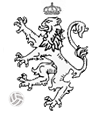
Document | arfsh.com
A document created by arfsh.com for the whole football community
Antonio Sastre
Author: Isaque Argolo | Creation Date: 2021-10-02 15:07:01
Data providers: Isaque Argolo.
Archive(s): .
Antonio El Cuila Sastre (27/04/1911 - 23/11/1987) was an Argentine football player who played mainly as a right inside forward, but could also play on the left side of the position, half-back, winger, centre-forward, full-back and, when necessary, goalkeeper. For Argentina he scored 6 goals in a total of 35 matches played. In his career, not only did he become an idol for the Argentine national team, but Sastre became an idol for the club that revealed him for football, Independiente, and later, already in an almost final stage of his career, for São Paulo F.C. Even a decade after he stopped playing, Cuila Sastre was constantly mentioned as one of the greatest players of all-time. For many, Sastre was the best, thus, being part of the select group of the highest level of footballers ever produced in the history of football. Sastre didn't have a talkative personality, but he had exactly what was needed on the pitch. It was completely unusual for Sastre to be gesturing or constantly talking within the field. In this respect, he was different from Alfredo Di Stéfano, for example, who insisted on showing that he was the owner of the orchestra, that the system revolved around him. Sastre was a more subtle, silent commander. Sastre was a gentleman on and off the field, a player of extreme class. Regarding this aspect of Don Antonio Sastre, coach Vicente Feola commented: — If the game came out according to our reasoning, perfect. If it didn't, we could trust his wits: subtly, without shouts and alarms. Don Antonio changed everything with rare and timely wisdom. El Cuila Sastre had thin legs, almost without any developed muscle. He was thin, not at all robust, but still resistant when any contact was caused. He would enter the field with his hair all wet back and with an appearance that reflected a stoic calm. Although Sastre was a very dynamic footballer, fast, always moving during the match and was always working for the benefit of the team — offensively or defensively —, he was a much more cerebral player than focused on physical characteristics. He, however, due to his knowledge of scientific football, one of the traits of knowing the right moment to run, ended up having more stamina and vitality, alongside his prominent athletic features, in phases closer to the end of the match.* * *Don Antonio Sastre had a completely notorious, precise and refined technique. The ball obeyed his most incisive commands. Whether in the simplest touch performed; whether after a complicated situation, Sastre would kill the ball with extreme calm, efficiency, wisdom, naturalness and with a unique, elegant touch — a true artist, El Maestro. He was a player of high technical skills, dominating any variant of the sphere. Sastre gave passes with mathematical precision for each situation, but passes, for the most part, short and on the ground. He finished off the ball with unparalleled dexterity, finesse and accurate placement. He was a ball-oriented player; not with strength or potency. CUILA, THE GENIUS Intelligence, quick thinking, perception are words intended to characterize, reflect the genius of Don Antonio Sastre. As mentioned in the lines above, Sastre was a player who did not have a remarkable physique, but a player who emphasized the fact that football must be thought about, must be scientific and played, in principle, with the head before everything else. He was one who had a reasoning far above the normal standard of a footballer, he thought fast and in advance of the various movements to be performed. Just like a chess player thinks, Sastre had a futuristic map of the moves in his head.PIMENTA NETTO: Sastre was one of those iconic players. He emerged as the very synonym of football. The model insider, the paradigm forward, the modeler of a team. With Sastre at São Paulo, a whole team improved. The half-backs became more efficient, within his high classicism. The vanguard men started to have more brains. And the talent, the genius of the whole team was reflected in performances of consular expression. VALENTÍN SUÁREZ: After the World Cup in Mexico '86, that list has a new member: Diego Armando Maradona. I don't know in which location, it would be unfair to go down to one or go up to another. But Sastre is always at the top of my preferences, because he was an extraordinary player: he played and made others play. In a discussion I can accept that someone prefers Moreno, because they were both there; the others are a little further away.
© arfsh.com & Isaque Argolo 2024. All Rights Reserved.